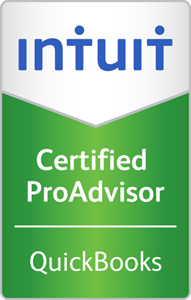One of the single most impacting decisions you can make for your business is its entity type. This decision will affect how much you or your business pays in tax on income, the level of personal liability you’re taking on, and even how much paperwork you’ll have to complete. Nearly all businesses fall under these common entity types:
- Sole Proprietorship
- Partnership
- Limited Liability Company (LLC)
- Corporation (C-Corp)
- S-Corporation (S-Corp)
How Business Taxes Work
Based on the entity type you choose to set your business up under, federal tax law will designate how your business income is taxed. All of the above business entity types are taxed according to two different systems.
- Direct Taxation: C-Corporations are designated as separate legal entities from their owners, meaning that the company itself will be taxed on all profits after business expenses. There are tax-deductible expenses which are business expenses spent toward making a profit. These include operating expenses, advertising expenses, payroll expenses, and more. C-Corp owners are also taxed on dividends they get from the business.
- Pass-Through Taxation: Sole Proprietorships, Partnerships, LLCs and S-Corporations are all taxed using the pass-through taxation method. These business entities must still file and pay state and city taxes to those applicable governments, but the federal government tax passes through to the owner’s individual tax return. Any business profits are taxed as additional income for the business owner(s).
As you choose which business entity is right for your business, you will want to consider the taxation method, since owners would be taxed on two levels (business profits and personal dividends) and pass-through taxation happens on only one level directly to the owner(s). C-Corporations can also retain some profits—called ‘Retained Earnings’—and deduct the cost of ‘Fringe Benefits’ provided to employees.
You should also consider the limitation of liability that you’re taking on—the C-Corp structure is separate from the owner’s personal assets, protecting them from any claims from creditors of the business.
Business Entity Types
Before you finalize your decision on the right business entity for tax purposes, learn a little bit more about each different entity type:
Sole Proprietorship
If you’re looking for the simplest, most basic type of business, a Sole Proprietorship may be right for you.
- Owners: A Sole Proprietorship may only have one owner (proprietor).
- Formal Creation Requirements: None
- Exposure for Liability: High, since the owner is personally liable on an unlimited level for all business debts as well as any negative employee actions, since employees are technically personally hired by the owner.
- Taxation Method: Pass-Through taxation, where any business profits are reported on the owner’s personal tax return. Click here for form(s) to file as a Sole Proprietor.
Partnership
Partnerships can take a few different forms, although the most common are General and Limited Partnerships. The structure of the partnership will depend on the nature of your arrangement and distribution of responsibility. Taxation can become complex with a Partnership, and there are some differences in liability for the owners of varying types of Partnerships.
- Owners: Two or more
- Formal Creation Requirements: Some Partnerships, such as a Limited Partnership (LP) must be formally created under the state. Others, like General Partnerships, do not require any formalities.
- Exposure for Liability: High with General Partnerships where all owners share unlimited personal liability, but with Limited Partnerships only one owner must carry the liability.
- Taxation Method: All income from a Partnership must be reported on the owners’ personal tax returns. In the case of General Partnerships, the business must also send all partners a form (Schedule K-1) for reporting their share of income and expenses from the business. Click here for form(s) to file as a Partnership.
Limited Liability Company (LLC)
With greater simplicity, flexibility and limited liability features, an LLC is structured to be a great choice for small businesses.
- Owners: One or more
- Formal Creation Requirements: Although an LLC is typically more cost-effective to maintain (with regard to taxes) as compared with a corporation, LLCs must be formally created under state law. There are also fewer rules for governing and operations than with a corporation.
- Exposure for Liability: All LLC owners enjoy limited liability for the business’ debts, but in addition, the LLC and its owners are all protected from claims from other owners’ personal creditors. This advantage is not enjoyed by the owners of corporations or Limited Liability Partnerships (LLPs).
- Taxation Method: Like with other partnerships, an LLC’s business income is reported on the owners’ personal tax returns. No additional tax return is required, however LLCs with multiple owners can choose to be taxed as if they were a corporation, which would require a separate business return. Click here for form(s) to file as an LLC.
Corporation (C-Corp)
Larger, more established companies with multiple employees and public companies with a Board of Directors are often structured as Corporations. This entity type offers more flexibility and limited liability to owners, since they are not personally liable for the business’ debts or employee misconduct.
- Owners: One or more
- Formal Creation Requirements: Corporations must be formally created under state law, and typically cost more to maintain than an LLC. C-Corps are also subject to additional formal rules, known as ‘corporate formalities’, for meetings, record keeping, and actions of the officers and directors.
- Exposure for Liability: All C-Corp owners have limited liability regarding the business’ debts and employees.
- Taxation Method: C-Corps must file a separate business tax return, which often results in higher taxes as compared with other business entities. Click here for form(s) to file as a C-Corp.
S-Corporation (S-Corp)
Although the structure of an S-Corp is similar to that of a C-Corp, this business entity type is more beneficial for small businesses because taxes are applied to the owners’ individual tax returns, and no additional returns are needed. A C-Corp can switch to an S-Corp after creation, in order to be treated as a tax conduit to eliminate double taxation and keep the corporate structure benefits.
- Owners: One or more
- Formal Creation Requirements: S-Corps must also be formally created, and are also subject to many of the ‘corporate formalities’ of C-Corps. After it is created, the business owner(s) must file an election for Subchapter S corporation with the IRS.
- Exposure for Liability: Owners of an S-Corp also have limited liability for the business’ debts, as with any corporation.
- Taxation Method: Unlike with C-Corporations, S-Corp businesses are taxed on the pass-through method, where the owners are individually taxed for their share of the business’ income. Click here for form(s) to file as an S-Corp.
Ready to choose your business structure? Click here for steps to determine your federal tax obligations. You should consider professional guidance, since one business entity isn’t necessarily better or worse for your business, and a tax professional’s advice can go a long way toward setting your organization up for success with optimal tax costs and appropriate liability. Contact us to consult with a tax professional.








